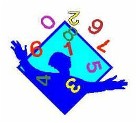Introduction to Learning Styles
Learning style is an individual's natural pattern of acquiring and processing information in learning situations. A core concept is that individuals differ in how they learn. People understand and develop information in different ways. A learning style is a technique that a person uses to learn. There are three types of learning styles which are Auditory, Visual and kinesthetic. The majority people learn best through a mixture of the three types of learning styles, but everyone is different.
Here are the different types of learning styles listed below:
- Auditory - You need to hear, either to listen or to participate in discussions.
- Tactile/Kinesthetic - You need to write, to touch, to do, to move, to build.
- Visual - You need to see text, diagrams, flow charts, demonstrations.
- Reflective - You need to think through before doing.
- Social - You prefer to study with other people.
- Solitary - You prefer to study alone.

Learning Styles
|
What Does This Mean
|
Common Phrases
|
Learning And Techniques
|
Verbal
|
Verbal style means it compose both the written
and spoken words
|
The common phrases of verbal are:
"Let me spell it out for you"
"In other words"
|
If you are a verbal learner try to do
techniques such as writing and involving speaking. It is best to try finding
ways to include more speaking and writing techniques. For example you could
draw diagrams or charts to help you remember.
|
Visual
|
If you are a visual learner you prefer using
images, pictures, colors, and maps to organize information, communicate with
others. You can easily visualize objects plans and outcomes in your mind's
eye.
|
The common phrases of visual are:
"I get the picture"
"What's your view"
"I see that now"
|
If you are a visual learner you should try
using mind maps. Use color and pictures in place of text, wherever possible.
If you don't use the computer, make sure you have at least four different
color pens.
|
Social
|
If you are a social learner you should have a
strong social style, you communicate well with people, both verbally and
non-verbally.
|
The common phrases of social are:
"Help me understand this"
"We can work it out"
"Tell me what you are thinking"
|
If you are a social learner try to work with
others as much as you can. Try and aim to with a group or a class. Also you
can try to get into groups and plan different techniques you can use to help
you learn.
|
Solitary Learner Style
|
If you are a solitary learner you prefer to
work independently and introspective. You can concentrate well, focusing your
thoughts and feelings on your current topic. You are aware of your own
thinking, and you may analyze the different ways you think and feel.
|
The common phrases of solitary are:
"I'd like some time to think it
over"
"I'll get back to you on that"
"This is what I think or feel about that"
|
If you are a solitary learner you should try
setting your goals, objectives and plans. Understand your reasons for
undertaking each objective, and ensure that you are happy with your learning
goals.
|
Physical Learner
|
If you are a physical learner you typically use larger hand
gestures and other body language to communicate. For example you probably
don't mind getting up and presenting a presentation in front of people.
|
The common phrases of physical are:
"I can't get a grip on this"
"Stay in touch"
"That feels right to me"
"My gut is telling me"
"I follow your drift"
"I have good feelings about this"
"That doesn't sit right with me"
|
If you are a physical learner you should Use
physical objects as much as possible. Physically touch objects as you learn
about what they do. Flashcards can help you memorize information because you
can touch and move them around.
|
Logical Learner
|
If you are a logical learner you like using your brain for logical and
mathematical reasoning. You can recognize patterns easily, as well as
connections between seemingly meaningless content. This also leads you to
classify and group information to help you learn or understand it.
|
The common phrases of logical are:
“That's logical”
“Follow the process, procedure, or rules”
“There's no pattern to this”
“Let's make a list”
“We can work it out”
“Quantify it, or prove it!”
|
If
you are a logical learner, you aim to understand the reasons behind your
content and skills. Understanding more detail behind your compulsory content
helps you memorize and learn the material that you need to know. Explore the
links between various systems, and note them down.
|
If you are an aural learner you like to work with sound and music.
You have a good sense of pitch and rhythm. You typically can sing, play a
musical instrument, or identify the sounds of different instruments.
|
The common phrases of aural are:
“That sounds about right”
“That rings a bell”
“It's coming through loud and clear”
“Tune in to what I'm saying”
“Clear as a bell”
“That's music to my ears”
|
If you are an aural learner you can often learn to play
several musical instruments. You may find it easier to learn additional
languages. You may struggle in math, but often perform well in traditional
school settings.
|

Personally my preferred learning styles are solitary, social and physical learning, as I work great independently and I am highly motivated person but I also take the time to assess my own accomplishments/goals. I also like to plan out goals and know what direction I'm going in life/work.
Here is a learning style interactive test to find out what kind of learning style you have: http://brainboxx.co.uk/a3_aspects/pages/VAK_quest.htm
I personally think that the solitary learning style will help me significantly if I am to work independently in an IT office environment and also help my personal development. I think that this learning style will help me in my future job being a software engineer. I also think that this learning style will help me with any job that requires initiative working. Furthermore this learning style will help me by planning and creating a log sheet to help set out my goals.
The next learning style that I think will help me significantly would be social as I like to work with others and I listen well and understand other people's views. I also think that this learning style will help me as I like being a team player which I think personally is a great for a job. An example of this learning style is when I get into groups with my class and solve or discuss our assignments.
The final learning style that I think that will help me significantly would be physical as I like to learn to think out issues, ideas and problems while I am doing something physical. I also think that this learning style will help me in future if I am asked to do a physical job. An example of what I like to do when using this learning style is when I take apart my computer to upgrade the components when I am upgrading my computer.
For further information here are a couple of links to help you find your learning styles:








No comments:
Post a Comment